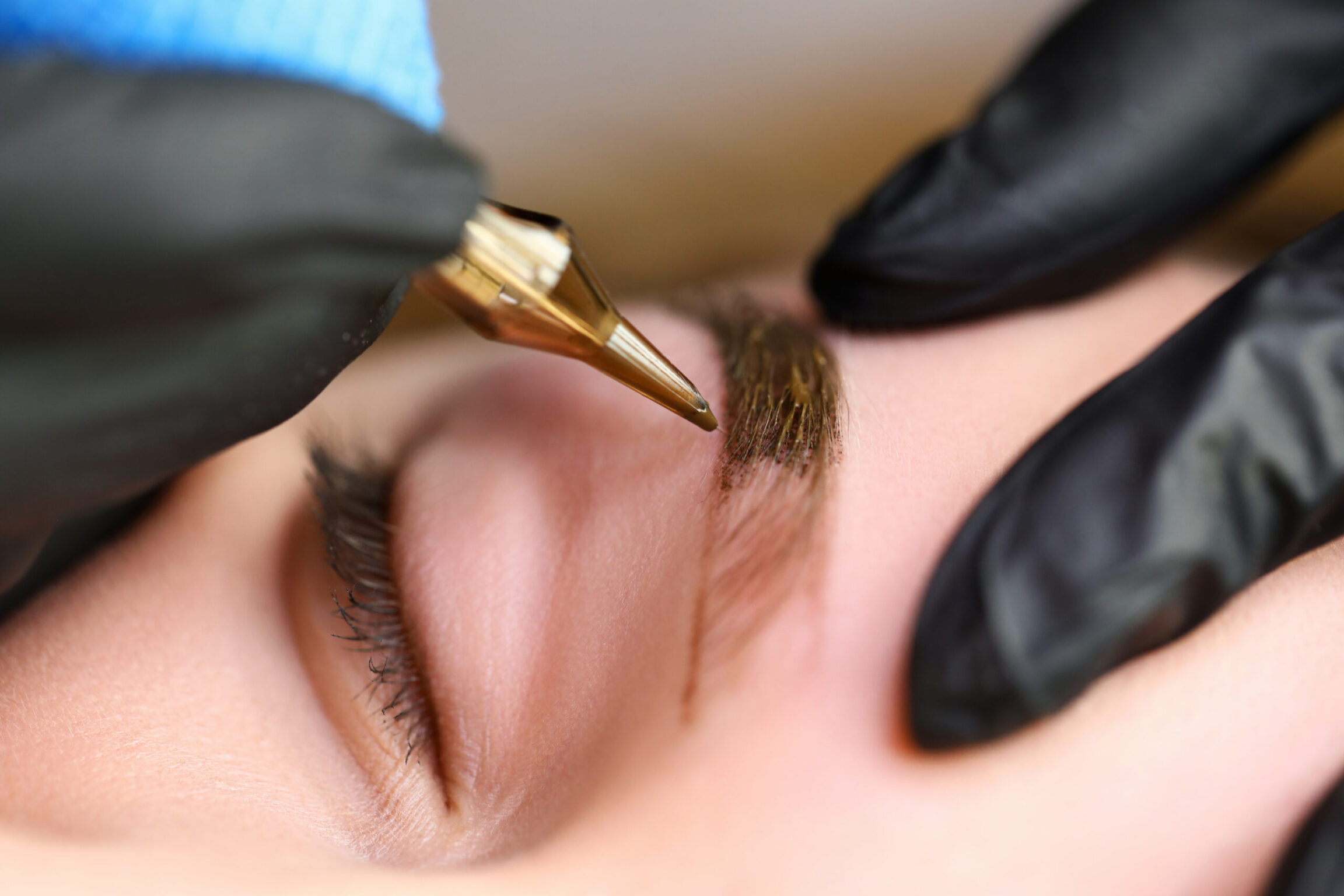What Causes Disproportionate Fat Loss?
The Complexities of Fat Loss Patterns & How to Address the Final Hurdles

You’re in the gym. You’re getting good sleep. You’re following the ideal diet down to the macro. However, the pounds just aren’t coming off — or they are not coming off evenly throughout your body. As frustrating as it may be, fat loss patterns are complex and weight loss is not always proportionate due to a variety of physiological, genetic and lifestyle factors that influence how and where the body stores and burns fat.
Having a firm grasp of what causes disproportionate fat loss can help you adjust your ongoing lifestyle plan to address some of the overlooked components throughout this journey.
Hormonal Influences
Hormones are influential regulators in fat loss, significantly impacting where and how fat is burned in the body. For example: Insulin, cortisol and thyroid hormones play pivotal roles in metabolism, energy storage and fat mobilization. Elevated cortisol levels due to stress can lead to fat accumulation, particularly in the abdominal area, while imbalances in thyroid hormones can disrupt overall metabolism and hinder weight loss.
Gender-specific hormones like estrogen and testosterone also contribute to fat distribution, with estrogen promoting fat storage in the hips and thighs for women and testosterone fostering a more even distribution in men.

Gut Health’s Impact On Hormones & Weight Loss

Genetic Predisposition
Genetic factors play a significant role in determining fat distribution patterns in the body. Some people are genetically predisposed to store fat in certain areas (such as the abdomen, hips or thighs) and these areas may be more resistant to fat loss.
Genetic predispositions can also affect hormone levels and receptors involved in fat regulation, leading to differences in where and how fat is lost. Variations in genes that regulate appetite and satiety can also impact fat loss patterns by influencing eating behaviors and energy expenditure.
Genes Related To Fat Loss
Types Of Fat: Subcutaneous vs. Visceral Fat
The body stores fat in two primary forms: subcutaneous fat (under the skin) and visceral fat (around internal organs). Visceral fat is more metabolically active and tends to be lost more quickly compared to subcutaneous fat, which is more resistant to mobilization.
Regional Blood Flow
Areas with higher blood flow, such as the face and upper body, may lose fat more readily than areas with lower blood flow, such as the hips and thighs. Increased blood flow enhances the delivery of hormones and enzymes involved in fat breakdown.
Exercise Patterns & Targeting
While spot reduction (losing fat from specific areas by exercising those areas) is largely a myth, exercise patterns can influence overall fat distribution and the appearance of muscle. For example, aerobic exercises tend to reduce visceral fat more effectively, while resistance training can help maintain muscle mass and improve overall body composition.
Additionally, muscle requires supplemental calories to maintain, meaning a patient with greater muscle mass can have a higher caloric intake vs. someone with lower muscle composition without storing extra calories as fat.


Diet & Nutrition Choices
Macronutrient composition and caloric intake can impact fat distribution. High-carbohydrate diets may contribute to fat storage in different areas compared to high-fat diets. Overall caloric deficit and nutritional balance are crucial in how fat is mobilized and burned. Working directly with a registered dietician can help patients discover a nutrition regimen that is both effective and sustainable long-term.
Benefits Of A High-Protein Diet For Even Weight Loss
A high-protein diet aids proportionate weight loss by increasing satiety, which helps reduce overall calorie intake and curb hunger. It also boosts metabolism through the thermic effect of food, which requires more energy to digest and process protein compared to fats and carbohydrates. Additionally, protein supports muscle preservation and growth, which enhances metabolic rate and promotes a leaner body composition.
Individual Metabolic Rate
Basal metabolic rate (BMR) varies between individuals, influencing how quickly and efficiently the body burns fat. Factors such as age, biological sex, muscle mass, and overall health can affect BMR and fat loss patterns.
Age
As people age, hormonal changes and a natural decline in metabolic rate can affect fat distribution. Older individuals may find it harder to gain muscle and lose fat in certain areas compared to younger individuals.
Stress, Sleep & Other Lifestyle Factors
Chronic stress and poor sleep can lead to hormonal imbalances, particularly increased cortisol levels, which promote fat storage, especially in the abdominal area. Managing stress and ensuring adequate sleep are crucial for balanced fat loss.
Where Do Women Lose Weight First & Last
In women, weight loss often begins in the areas with the least fat storage, such as the face, arms, and chest, due to hormonal influences. The midsection, particularly the lower abdomen, hips, and thighs, is usually the last to lose fat because these areas are hormonally protected for reproductive purposes.
The body’s reluctance to release fat from these regions is a significant factor in the perceived disproportionate fat loss experienced by many women.
Where Do Men Lose Weight First & Last
Men typically experience fat loss first in the abdomen and chest, where fat stores are more readily mobilized. As weight loss continues, the body will gradually reduce fat in other areas such as the arms and legs. However, the lower back and love handles are often the last areas to shed fat, which can be frustrating for those seeking a leaner physique.
This pattern is primarily due to the influence of testosterone and other metabolic factors that dictate fat distribution and loss in the male body.
How To Prevent Disproportionate Fat Loss
While it’s challenging to prevent disproportionate fat loss entirely, adopting a comprehensive approach to diet and exercise can help achieve a more balanced outcome. A well-rounded exercise regimen that includes both cardiovascular activities and strength training can optimize fat loss across the body. Ensuring adequate protein intake and maintaining muscle mass can also prevent muscle loss, which is crucial for maintaining a more proportionate physique.

How To Overcome The Final Weight Loss Hurdles:
- Liposuction: A surgical method to remove stubborn fat deposits, refining the body’s contour and achieving a more proportionate appearance.
- Tummy Tuck: A comprehensive procedure that removes excess skin and fat from the abdomen, enhancing the body’s natural contours.
- Gynecomastia Surgery: A specialized intervention for men to reduce excess breast tissue, achieving a flatter and more masculine chest.
- CoolSculpting: A nonsurgical technique that employs controlled cooling to target and eliminate fat cells, significantly reducing stubborn fat pockets.
- Kybella: An injectable treatment that dissolves fat cells, typically used to reduce submental fat (double chin) and improve facial contours.
- Hormone Therapy: A tailored approach that optimizes hormone levels to support metabolism and fat loss, especially when hormonal imbalances are a contributing factor.
About The Author
Colleen Bush, RDN, LDN, IFMNP, is a registered functional medicine dietitian in Columbus, Ohio. She creates customized lifestyle programs for her patients, designed to address their most pressing health concerns — with gut health and weight management being top priorities for many patients. She uses an education-first approach when it comes to helping these individuals understand all of the various factors that are at play while trying to lose weight evenly and with an optimized metabolic response.

Related Articles

Read More How To Build Healthy Habits
How To Build Healthy Habits
A strong, healthy lifestyle isn’t about perfection – it’s about consistency. Our guide to healthy habits breaks down simple, effective ways to create lasting routines that work with a busy schedule.

Read More How To Maintain Ozempic Results
How To Maintain Ozempic Results
Long-term methods to reinforce healthy habits & support your metabolism to sustain your results & continue feeling your best.

Read More Dr. Weston at RTRX 2024
Dr. Weston at RTRX 2024
Marguerite Weston, MD, took center stage at RTRX 2024 to deliver an engaging Masterclass seminar that addressed the interconnectivity of stress, hormones & our overall health.














